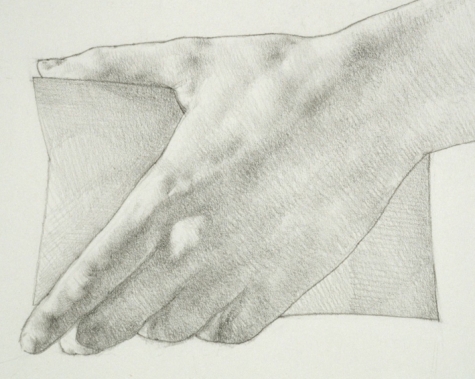
The term ‘form’, as we apply it to our work as painters, refers to the things, all the things, that interact with light to produce the world of visual effects. It’s everything that we see by means of light.
In order to study and get a perspective on such a vast universe of form, we concentrate on one form in particular, the human figure, which we approach as a paradigm, and in which we discover the principles governing the form of everything else.
It’s said that if we can learn to draw and paint the human figure, we can draw and paint anything. This doesn’t mean that having learned from the figure, we’re automatically experts at landscape or still-life painting. But the deep training derived from the study of the figure provides a foundation on which to build.
The form of the body is also sometimes referred to as ‘structure’. Here is a list of its characteristic aspects, by Ted Seth Jacobs:
Principles of Human Structure
1.Structure is universal, common to everybody and characteristic of organic, natural forms.
2.The body operates as a unified organism.
3.The body is characterized by continuity.
4.Every structure has a distinct, characteristic shape.
5.The structures of the body are almost all tapered and smoothly interwoven.
6.The two sides of the form are never perfectly parallel.
7.All structures of the body are asymmetric.
8.Most structures are pitched diagonally across the central axes, and do not run parallel to them.
9.Parts of the body are integrated into their neighboring structures. Nameable parts of the body are not separate entities.
10.All forms of the body are to some degree curved, never flat, never straight.
11.The body makes use of leverage by attaching muscles far down on the bones, rather than at the joints.
12.All forms of the body are expansive, full and convex.
13.Smaller forms grow as if packed or superimposed atop larger underlying masses.
14.Structures group in families of related shapes.
15.Contiguous structures are subtly knitted together by small, connective structures.
16.All structures on the body are arranged along curving pathways, giving the body a ‘designed’ appearance. The body is characterized by being highly organized.
17.Pathways twist around the body in a multiplicity of directions, forming a complex network.
18.Many pathways are express purpose-built architectural configurations.
19.Gesture is the physical expression of intent.
20. Gestural intentions can be expressed as a line of movement, the Hidden Curve.
Visit www.theryderstudio.com for more information on art classes.
